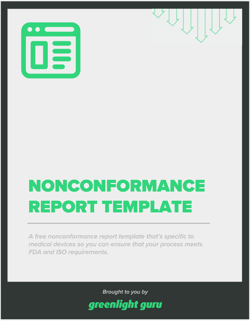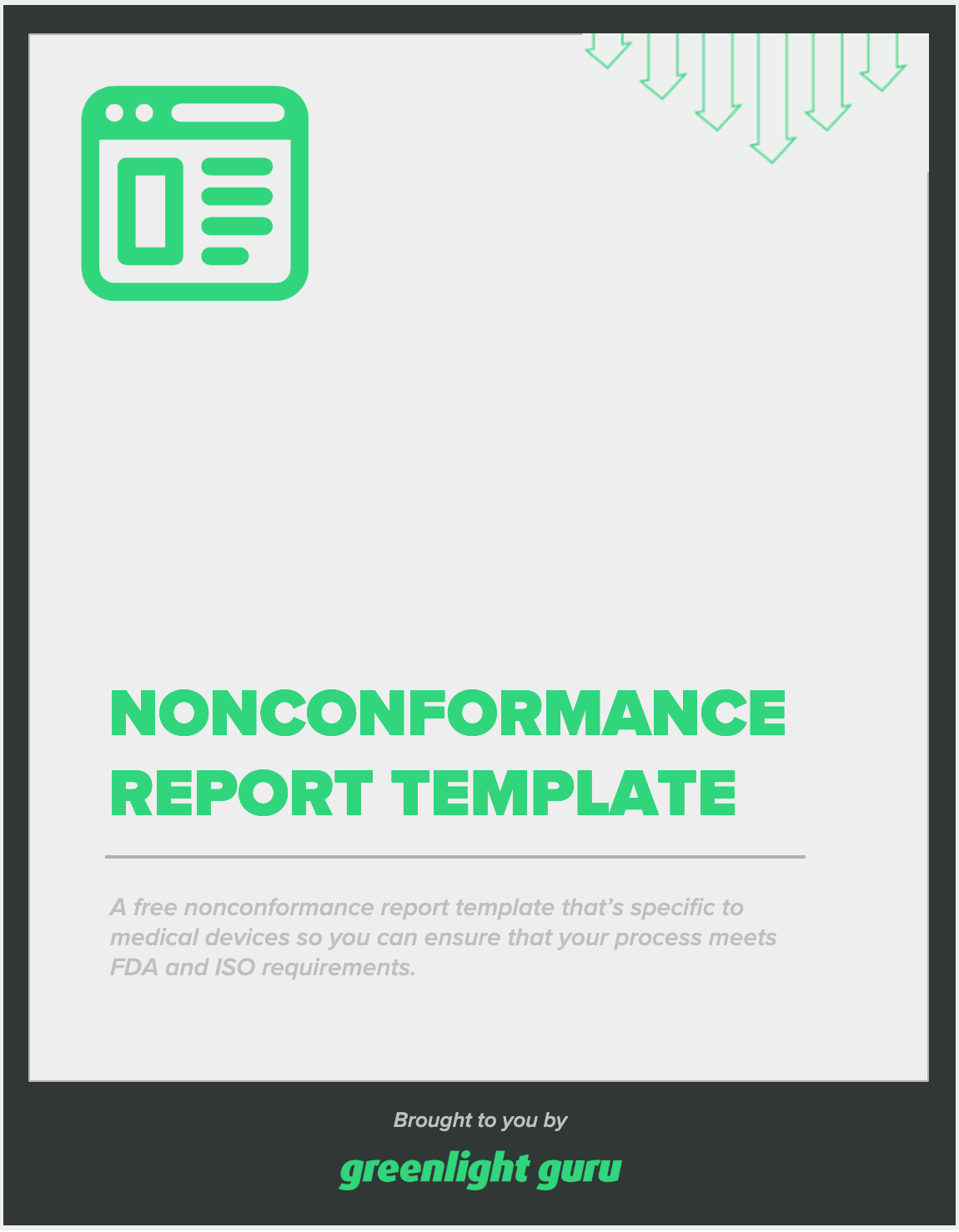Calculating Nonconformance Costs in the MedTech Industry

In the MedTech industry, nonconformance costs are about more than just your company’s bottom line. Mounting nonconformance costs may signal something is wrong with your manufacturing processes, suppliers relationships, or even your device’s design.
But as the old adage goes, if you can’t measure something, you can’t improve it. And while calculating the costs of your nonconformances can be tricky, it’s important that you can find a way to do it. So let’s take a look at how to identify, measure, and reduce your nonconformance costs.
BONUS RESOURCE: Click here to download a free, customizable Nonconformance Report Template.
What role do nonconformance costs play in your Cost of Quality?
Your nonconformance costs are actually only half of a larger “cost” to your business: the cost of quality (CoQ). A company’s CoQ is made up of all the costs it incurs to ensure that its products meet previously specified standards of quality.
Every MedTech company incurs a CoQ, and that cost is made up of two distinct parts:
-
Cost of conformance: This is the cost incurred to achieve the specific quality requirements of your product. This includes both prevention and appraisal costs (design review, testing, internal audits, etc.)
-
Cost of nonconformance: This is also known as your failure cost, or the costs incurred to investigate nonconformances and take corrective actions. However, it also includes less defined costs, such as negative impacts on your business due to nonconformances.
In this article, we’re focusing on the cost of nonconformance, but it’s also important to understand the larger context of these costs, as well as what doesn’t fall under the umbrella of nonconformance costs, i.e., the cost of conformance.
What are some examples of nonconformance costs?
Nonconformance costs can be lumped into two categories: internal and external.
Internal nonconformance costs
Internal nonconformance costs are the resources that your company has to deploy internally to address nonconformances once they’re identified. Those costs can include both the time and resources spent on an investigation and the disposition actions, such as:
-
Scrapping the product
-
Returning a component or part to a supplier
-
Downgrading a product (when a problem is identified with a new version of a device following a change. Until a solution is identified, the previous version is to be used).
-
Rework of the product (including retesting to ensure it meets specifications after reworking)
These costs can also include further actions like opening a CAPA if the issue appears to be systemic, retraining activities, or even a recall depending on the severity of the problem.
External nonconformance costs
External nonconformance costs are a little harder to pin down. These are the negative impacts on your business from the nonconformances. They can include resources used for activities like:
-
Resources required to handle customer complaints
-
Lost business due to poor customer satisfaction
-
Reputational damage leading to lost sales opportunities
How can you measure your nonconformance costs?
To understand your total cost of quality, you need to be able to measure your nonconformance costs. There are a number of ways you might do this, and the method(s) you choose may depend on your product and the size of your business.
In fact, you may need to use more than one method of measuring your nonconformance costs in order to get a more holistic view of what you’re spending on nonconformances—and how it's affecting your CoQ.
Labor Claiming
This measure of nonconformance costs is a calculation of the labor and/or resources that are used for fixing nonconformances. Essentially, you want to calculate the number of personnel and the hours they spend dealing with nonconformances. If it comes out to, say, one day a week for three employees over the course of a month, you can extrapolate that and come up with a specific number of hours lost each year due to nonconformances.
Whole Person
If your company is large enough, you might have personnel or even a department that deals with nonconformance problems, like customer complaints. In this case, you can simply add up the cost of these employees’ salaries and benefits to measure the cost of your nonconformances.
Unit Pricing
Another method for calculating the cost of your nonconformances is to use your documentation of nonconformances to add up the missing revenue from unsold product and/or the cost incurred from reworking product in order to fix the nonconformance.
Deviation from the Ideal
This method may help with the calculation of external costs. In this scenario, you compare your actual market share or sales with your theoretical estimates of what it should be if you did everything right, e.g., had no customer complaints, supplier problems, or other issues. This method has more subjective elements to it, but it can help you get a better sense of the less tangible costs incurred by your nonconformances.
BONUS RESOURCE: Click here to download a free, customizable Nonconformance Report Template.
Greenlight Guru Quality is the premier connected QMS solution for MedTech companies
As you assess different PLM software, you’ll notice that many PLM solutions also come with an option for purchasing a QMS, too. This may seem like a good deal at first, but remember that the key here is to evaluate these solutions in isolation. As long as your QMS and PLM systems can connect with each other, you don’t gain anything by bundling an industry-agnostic QMS with your PLM.
In fact, QMS software that has to be heavily customized to meet your needs more than erases any efficiencies you gain by using the same provider for both PLM and QMS. At Greenlight Guru, we built our QMS software specifically for MedTech because we know this industry inside and out, and we know how difficult it can be to make a generic QMS solution work for MedTech companies.
Our connected QMS software, Greenlight Guru Quality, comes pre-validated per FDA and ISO best practices, so you can start on day one knowing that your QMS is aligned with 21 CFR Part 820, ISO 13485:2016, and ISO 14971:2019. And with Greenlight Guru Quality, your quality data is never siloed—you can connect to the PLM solution of your choice.
Ready to see what a purpose-built QMS solution can do for your business? Then get your free demo of Greenlight Guru Quality today →
Etienne Nichols is the Head of Industry Insights & Education at Greenlight Guru. As a Mechanical Engineer and Medical Device Guru, he specializes in simplifying complex ideas, teaching system integration, and connecting industry leaders. While hosting the Global Medical Device Podcast, Etienne has led over 200...
Related Posts
Nonconformance (NC) and CAPA: When Should You Use Each Process?
30/60/90 Day Plan to Making an Impact as a New QA/RA Manager
3 ISO Compliance Guidelines Every Medical Device Manufacturer Should Follow
Get your free download
Nonconformance Report Template











